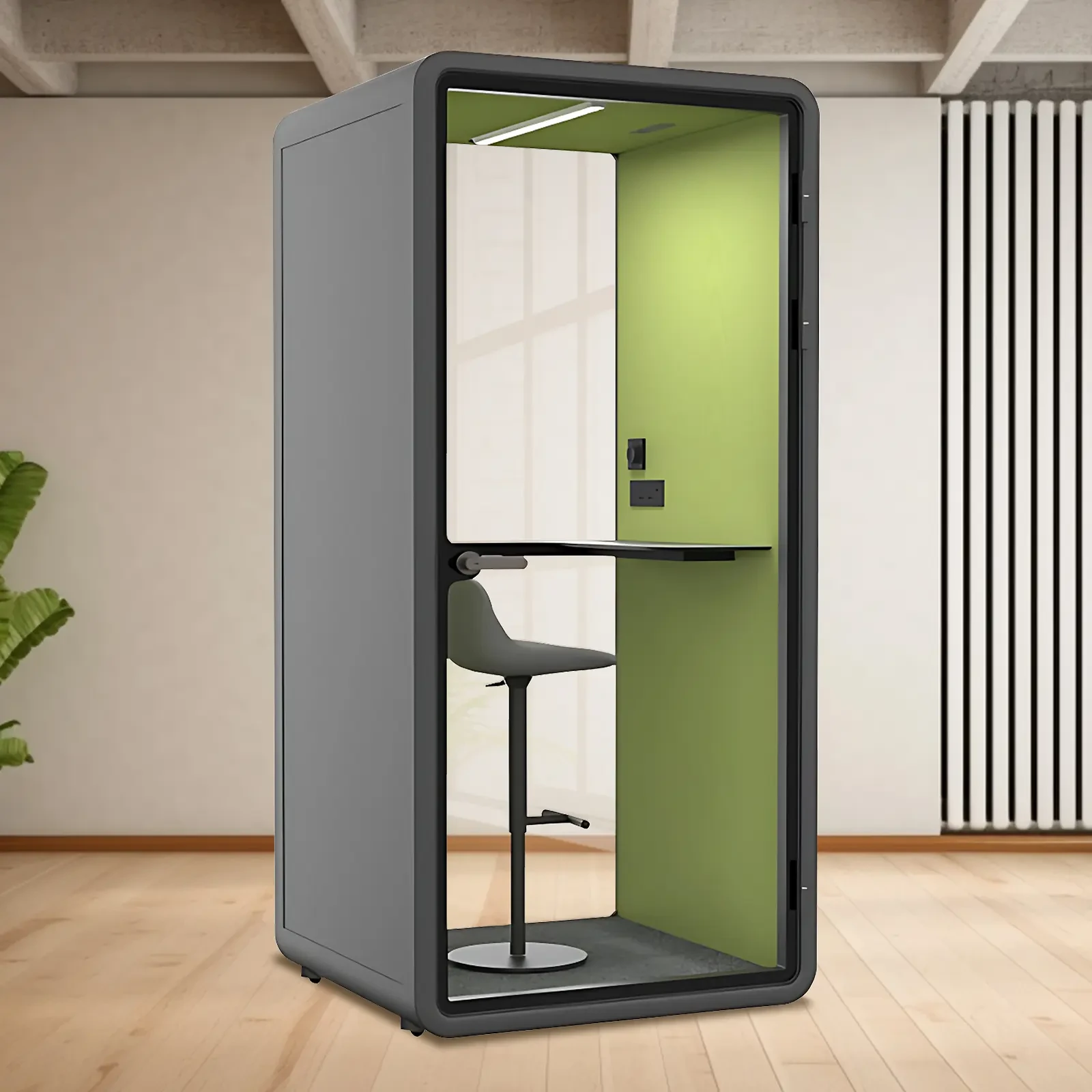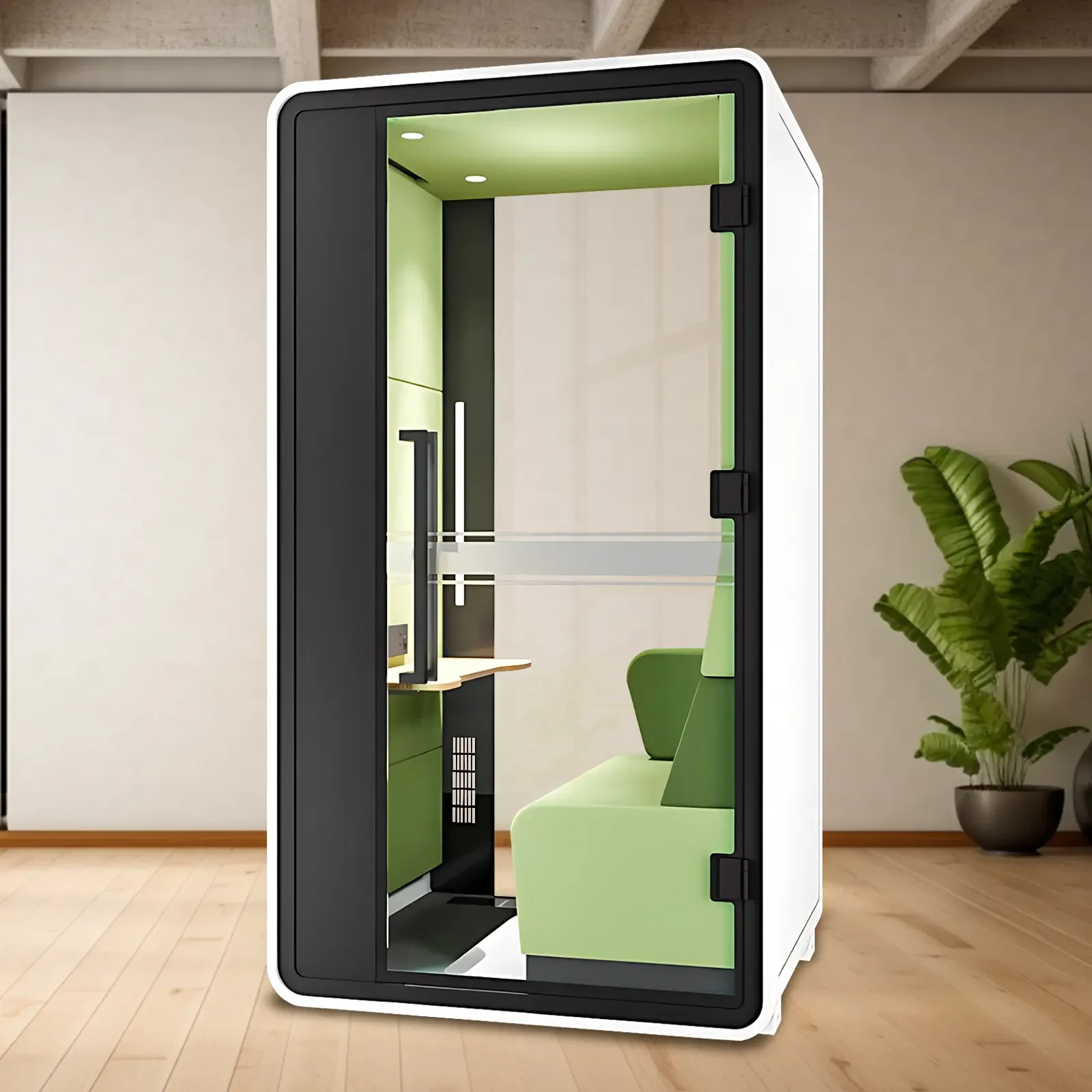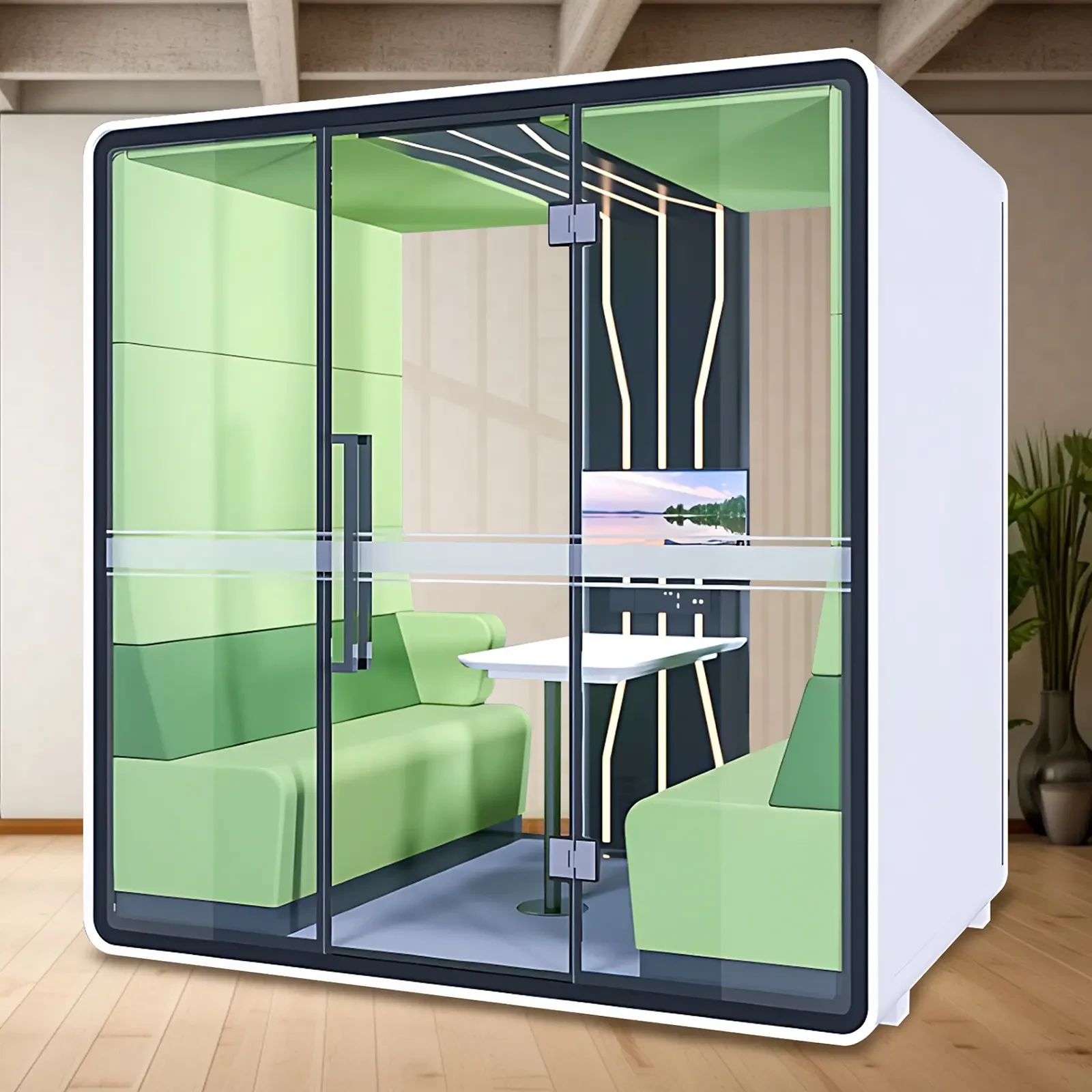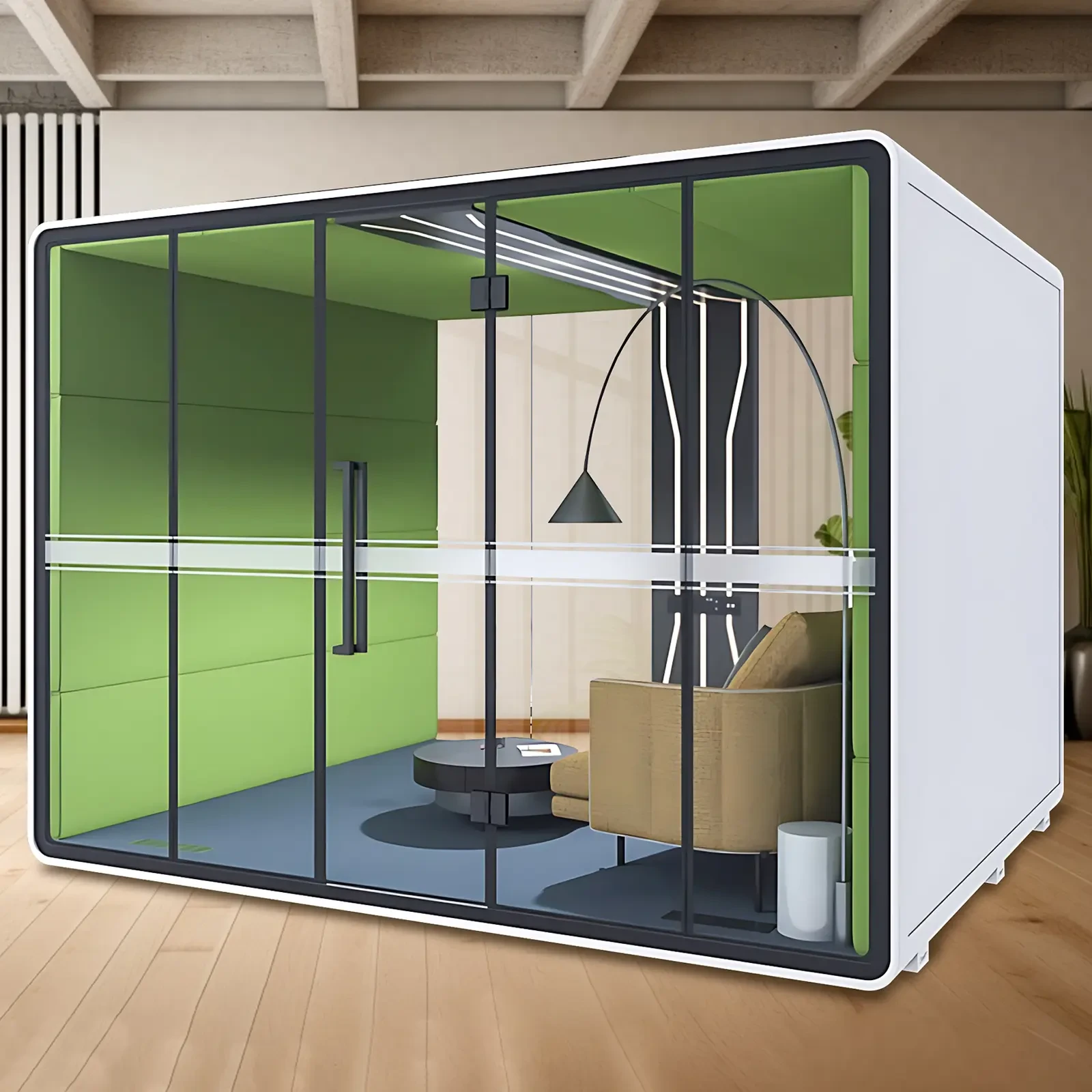In factory workshops, high-speed punch presses and assembly line equipment create piercing noise. Long-term operation can easily lead to hearing loss and reduced work efficiency. This article explains the principles and key factors in selecting a factory soundproofing enclosure/soundproof housing, covering materials, noise reduction levels, applicable scenarios, and common misconceptions. It also teaches you how to scientifically choose the right "silent solution"—what's the difference between 30dB and 50dB noise reduction? Which equipment must have a soundproofing enclosure? How to choose one within a 20,000 RMB budget? All explained in one article!
What is a factory soundproofing enclosure? It's more than just a housing."
A factory soundproofing enclosure, also known as an industrial silent room or equipment soundproofing enclosure, is an acoustic structure designed specifically to reduce the noise generated by machinery. Simply put, it's like "putting a noise-proof coat" on a roaring machine. Through a combination of physical barriers and sound-absorbing materials, it keeps high-decibel noise (such as high-speed punching machines, which can reach over 95dB) within a safe range.
This isn't just any metal box. A true soundproof room must meet the three key elements of "airtightness + sound-absorbing layer + shock-absorbing support." It's commonly found in high-noise production lines like metal stamping, welding, cutting, and injection molding. For example, a high-speed punching machine punching 200 times per minute without proper protection would not only make communication difficult for employees, but could also violate the "Environmental Noise Emission Standard for Industrial Enterprises" (GB 12348-2008), leading to fines for rectification.
Understanding the core specifications will help you avoid making the wrong purchase! Noise reduction doesn't equal high price.
When choosing a soundproof room, consider several key indicators:
Noise reduction (NR value): Generally between 25dB and 50dB, with higher values indicating quieter sound. For example, a soundproof enclosure for a punching press can achieve a 35dB noise reduction, reducing the noise level in the operating area from 90dB to 55dB, close to the level of normal conversation.
Sound insulation level: The internationally used STC (Sound Transmission Class) or IIC ratings are commonly used. For industrial-grade applications, STC 35 or higher is recommended, effectively blocking mid- and high-frequency noise.
Material Combination: The typical structure is a "steel frame + sound insulation board (double-layer steel + damping layer + sound-absorbing foam) + rubber shock-absorbing pads." Avoid using pure thin sheet metal, as resonance will amplify the noise.
Sealing: Door gaps and seams must be sealed with sealing strips to prevent sound leakage. Choose airtight or sliding sealing doors, ensuring the gap is ≤1mm when closed.
Don't be fooled by claims of "full transparency"! While tempered glass allows for clear viewing, its sound insulation performance is lower than that of solid panels, resulting in a compromised overall noise reduction. If real-time monitoring is required, industrial cameras are recommended instead of relying on window light.
Who is it suitable for? These six types of factories must have soundproof rooms!
Installing a soundproof room/enclosure is highly recommended in the following scenarios:
▶ High-speed punching machines and presses: A single impact generates impulse noise exceeding 90dB, which can cause hearing damage due to continuous exposure and are subject to key control measures.
▶ Automated assembly line equipment: Multiple machines operate in tandem, generating cumulative noise levels exceeding 85dB. Long-term operation can lead to occupational hearing loss.
▶ Laser cutting and CNC machine tools: Although not generating explosive noise, their long continuous operation periods can also affect employee concentration.
▶ Packaging and sealing machines and riveting equipment: Frequent startups and periodic noise levels can easily cause irritation.
▶ Factories near residential areas: Environmental Protection Bureau inspection priorities require noise levels to be kept below 65dB (daytime). Failure to do so will result in complaints or suspensions.
▶ For companies seeking ISO 14001 environmental management system certification: Noise control is a key scoring factor, and installing a soundproof room can add points.
⚠️ Reminder: Not all equipment is suitable for "fully enclosed" installations! For welding machines and large air compressors with high heat dissipation requirements, a combination of a localized soundproof enclosure and an exhaust and silencing system is recommended to prevent overheating.
What's your budget? Here's the cost-effective option!
Depending on size, material, and functional complexity, soundproof rooms generally range in price from:
Small, single-unit soundproof enclosure (suitable for a punch press): Approximately 12,000 to 28,000 RMB. Made of 1.5mm cold-rolled steel with a rock wool sound-absorbing layer, it reduces noise by approximately 30dB.
Medium-sized, fully soundproofed assembly line enclosure: 30,000 to 80,000 RMB. This enclosure includes a steel frame, double-layer soundproofing panels, and an automatic sensor door, suitable for connecting two to three pieces of equipment in series.
Customized, large, silent rooms (with air conditioning, lighting, and monitoring): Over 100,000 RMB. Suitable for precision assembly or R&D testing. ✅ Rational Purchasing Tips:
👉 If you simply want to address the issue of "hearing but not wanting to hear," a basic soundproofing enclosure is sufficient.
👉 If employees will be working nearby for extended periods, it's recommended to upgrade to a product with an STC rating of 40 or higher and pair it with noise-canceling earplugs for double protection.
👉 Common brands such as Jinke, Huatai, Luyuan, and Redes all offer customization based on equipment size, and some offer free acoustic testing services.
Conclusion
A factory soundproofing room isn't just a nice-to-have feature; it's a necessary investment to protect employee health, improve production efficiency, and mitigate environmental risks. 💡 Don't let "a little noise is okay" become an excuse! Choosing the right soundproofing enclosure depends on its noise reduction level, sealing performance, and vibration damping design. Don't blindly pursue size or price; the key is to choose one that "fits your production line's needs." Remember: good noise reduction isn't about "silence," but about "clearing distractions and clearly hearing instructions." 🎯 Start planning your workshop's "silence project" now!

 USD
USD
 GBP
GBP
 EUR
EUR






